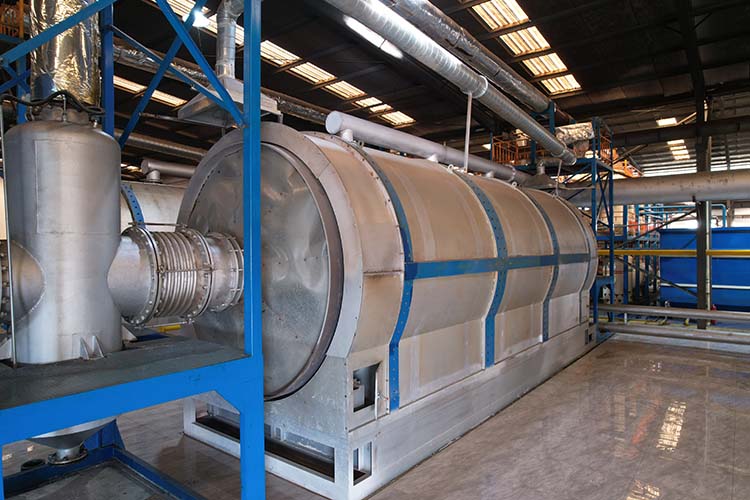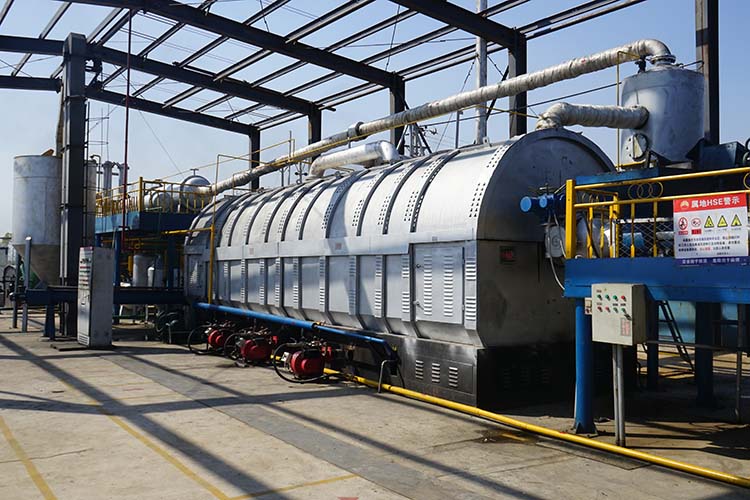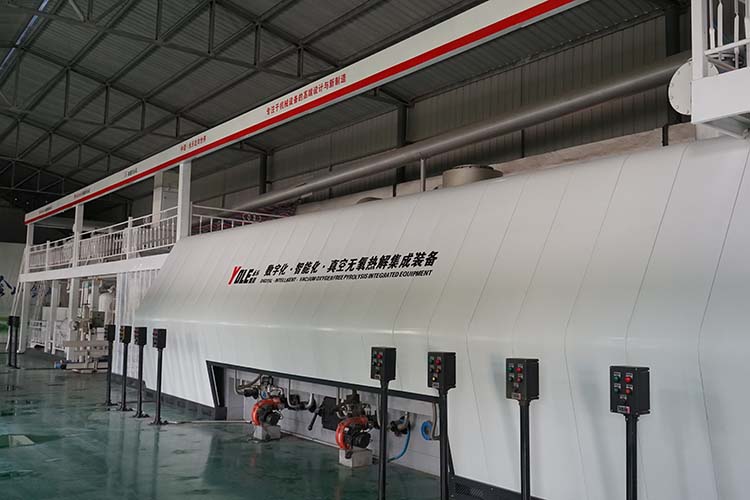With the increasing global awareness of environmental protection and the growing demand for resource recycling, the treatment of waste tires has become an important issue in the industrial sector. Traditional methods such as landfill and incineration not only occupy land and pollute the environment but also result in significant waste of rubber resources. Against this backdrop, equipment that utilizes pyrolysis technology for the reduction, harmless treatment, and resource recovery of waste tires provides a new path to solve this problem.

The core of waste tire oil production equipment lies in the control of the pyrolysis process. The entire production line begins with the pretreatment of raw materials, where mechanical crushing removes steel wires and fibers from the tires. Then, the rubber particles undergo a drying process to eliminate moisture, enhancing the efficiency of subsequent reactions. The treated raw materials enter a sealed pyrolysis furnace, where, in an oxygen-free environment, high temperatures break down the polymeric organic compounds in the rubber into smaller gaseous molecules and liquid oil products. The precise control of the temperature gradient and reaction time during this process directly determines the quality of the products, as it is crucial to avoid excessive cracking, which can lead to high carbon black production, while ensuring thorough decomposition of the organic materials to reduce residual impurities.
After the pyrolysis reaction is completed, the equipment employs a condensation system to cool and recover the gaseous products. Condensable gases are converted into liquid fuel oil, while non-condensable gases are sent to a purification device. These gases undergo desulfurization, dust removal, and other treatments to be recycled as a heat source for the system itself, effectively reducing energy consumption and preventing waste gas emissions. Meanwhile, the solid residues remaining in the pyrolysis furnace are separated by magnetic selection to recover high-purity steel wires. The remaining mixture of carbon black and fibers is processed using airflow separation technology to achieve fine separation, ultimately producing different grades of industrial carbon black and nylon fibers. This entire process chain is interlinked, utilizing the synergistic effects of physical separation and chemical reactions to fully extract the components of the tires.

Environmental performance is a significant advantage of this process. To address potential dust generated during production, the equipment is equipped with a pulse bag dust removal system and operates in a negative pressure environment, ensuring that the air quality in the workshop meets occupational health standards. Regarding wastewater treatment, the washing water from the raw material pretreatment stage and the cooling water from the equipment are filtered through sedimentation tanks and fully recycled for use in the production process, forming a closed-loop system. The waste gas treatment system employs a combination process of "spraying tower + activated carbon adsorption + catalytic combustion," which strictly controls the emission concentration of pollutants such as hydrogen sulfide and nitrogen oxides to levels below national standard limits.
The products obtained after systematic treatment have significant economic value. Through refining, pyrolysis oil can replace part of the industrial fuel; carbon black can be reused for rubber product production after modification; separated steel wires can be directly melted down; and nylon fibers can be transformed into engineering plastic materials. This resource regeneration model not only alleviates pressure on rubber resource shortages but also promotes the green development of downstream industries.

From a technological development perspective, the continuous innovation of waste tire pyrolysis equipment is driving industry transformation. The development of catalysts has improved oil quality; the application of intelligent control systems has reduced energy consumption by over 15%; and modular designs have significantly enhanced the adaptability of the equipment. As the global circular economy system is established, these technologies and equipment, which provide both environmental and economic benefits, are offering important support for sustainable industrial development and demonstrating the realistic possibility of "turning waste into treasure" under the support of modern technology. In the future, as processes continue to optimize and application scenarios expand, this technology will showcase its resource regeneration value in broader fields.
Yongle Environmental Protection is mainly engaged in the research and development, production and sales of complete sets of technical equipment for organic solid waste disposal and comprehensive utilization. Production and manufacturing, domestic waste treatment equipment, tire pyrolysis equipment, medical waste disposal equipment, hazardous waste disposal equipment, and achieve efficient and comprehensive utilization of resources through independently developed low-temperature anaerobic pyrolysis equipment technology solutions.
Tags:Process innovation and resource regeneration path of waste tire refining equipment,waste tire refining equipment,YONGLE GROUP
 Latest news
Latest news


























